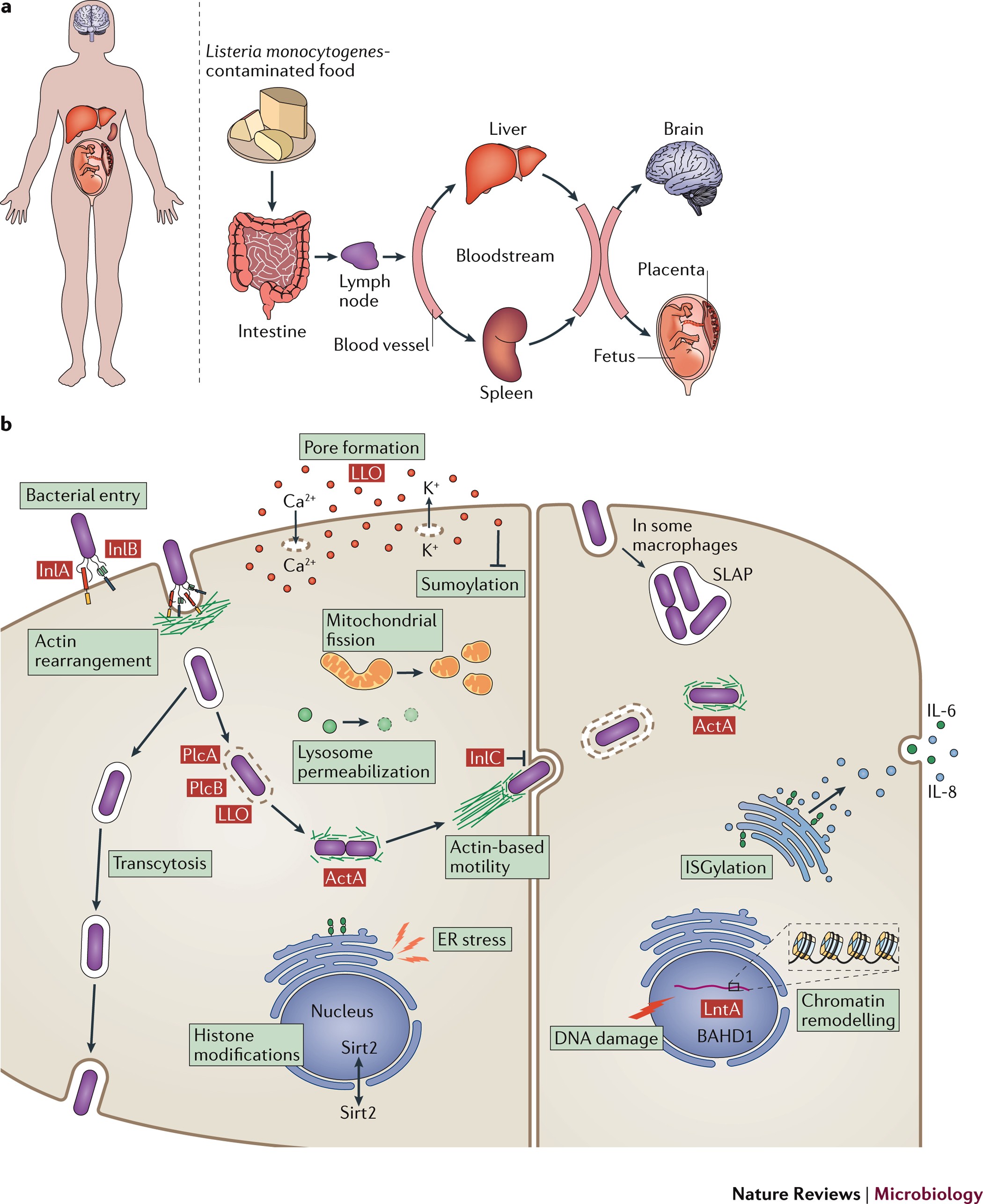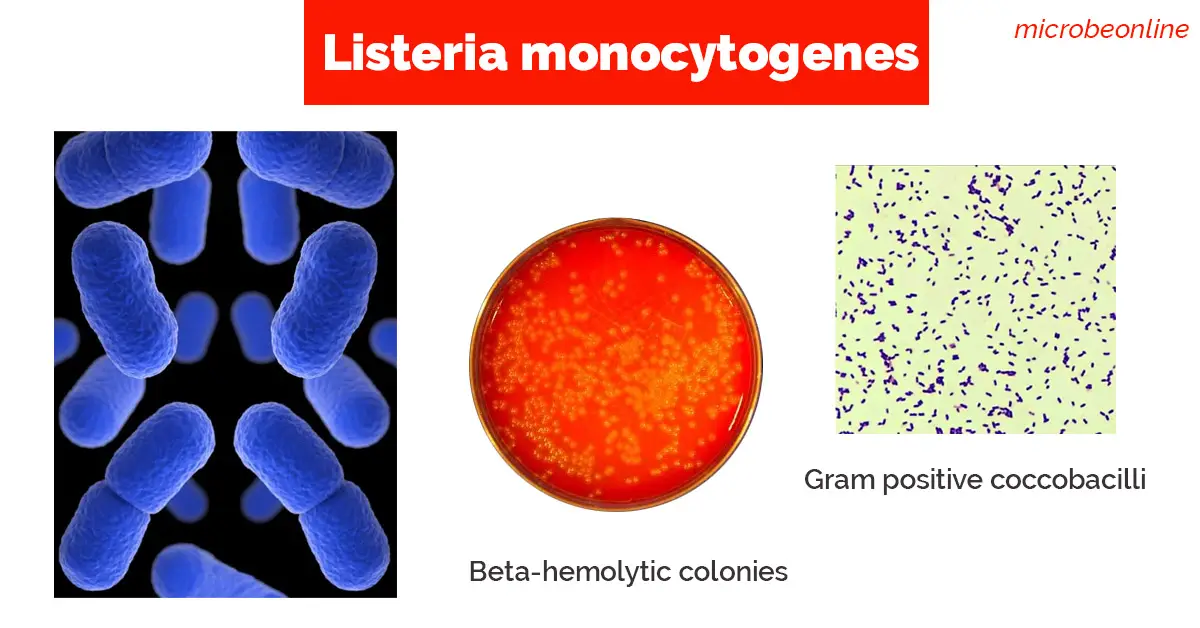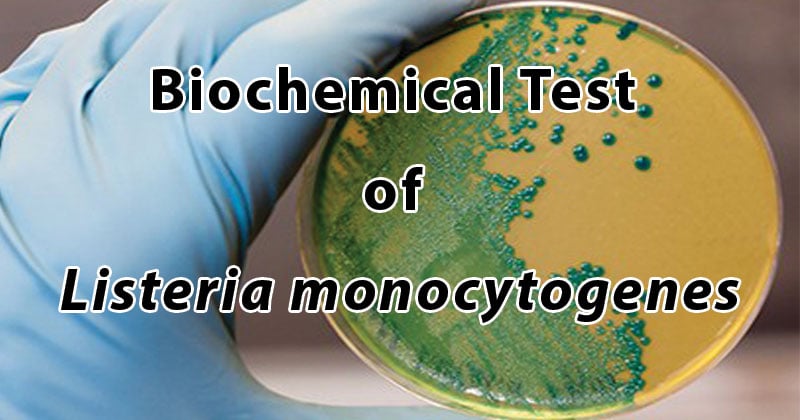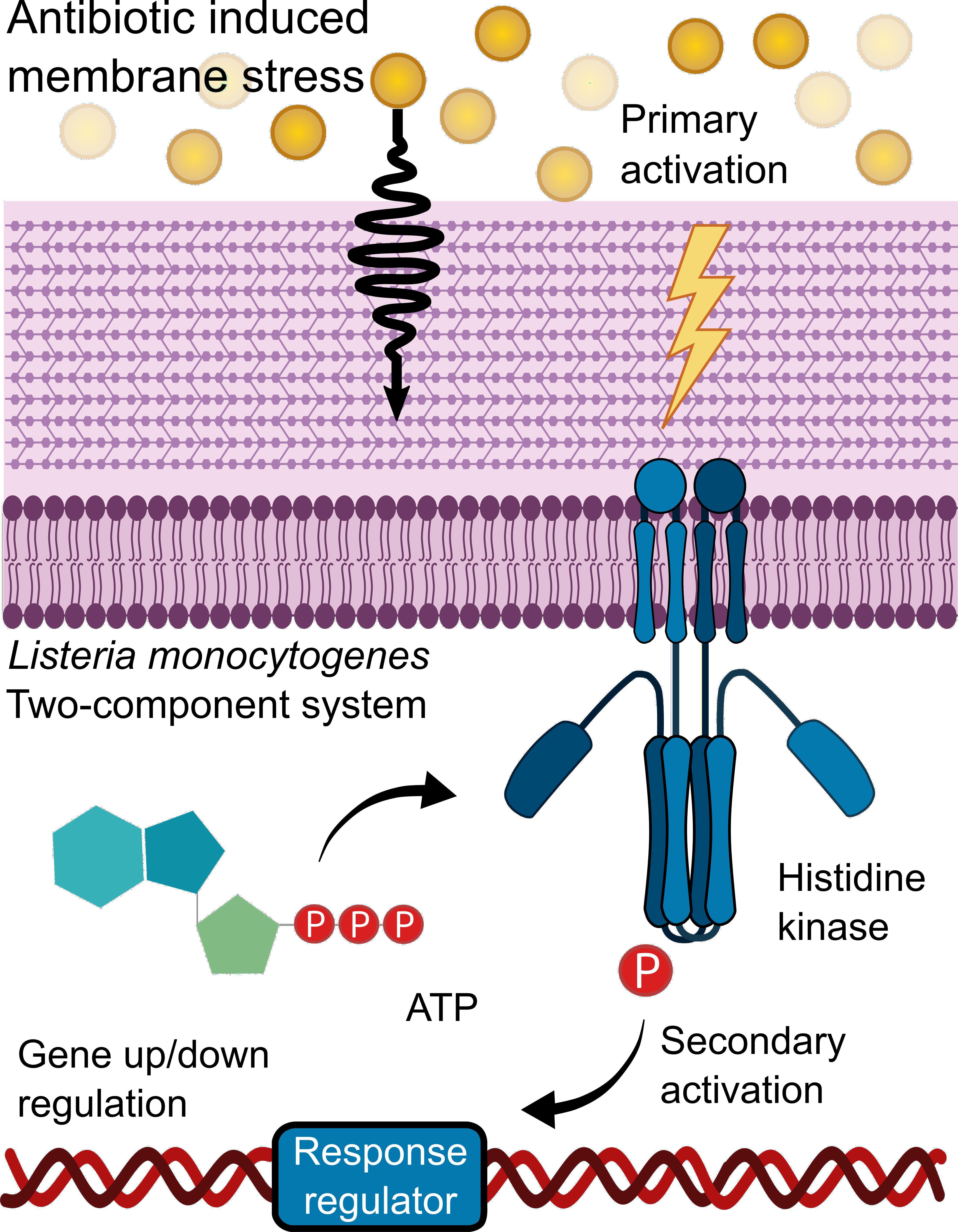Listeria Spp Characteristics
Have also been isolated as commensal bacteria from the intestinal flora of bovids birds and humans. Only 5 of all tested Listeria spp.
Chromagar Listeria Chromogenic Media Focus On Listeria Species
Are small gram-positive rod 054 μm in diameter and 052 μm in length non-spore-forming facultative anaerobic catalase-positive and oxidase-negative organisms.

Listeria spp characteristics. Moreno2 Ernesto Hofer3 Cristhiane M. Colony characteristics on ALOA medium i Pathogenic Listeria showing blue green colonies with halo MTCC1143 NCTC7973 MSV6 PHP7 and NHU9 ii Non-pathogenic Listeria showing blue green colonies without halo PHP25 and PHV25 iii Non-Listeria showing white colonies. The most prevalent pulse-type was PFGE profile I n 145 that consisted mainly of.
After 48 h colonies become darker with a possible greenish shine and are about 2 mm in diameter with black halos and sunken centers. In Africa with emphasis on molecular characteristics antimicrobial susceptibility and. Grown on Oxford agar for 24 h are small 1 mm grayish colonies surrounded by black halos.
The authors specifically found that Listeria spp. This paper therefore presents a comprehensive overview of currently available reports on Listeria spp. Matté1 1 Laboratório Prática de Saúde Pública Faculdade de.
18 9 were found positive for Listeria spp. Monocytogenes was isolated from 3 milk samples only. Characteristics and distribution of Listeria spp including Listeria species newly described since 2009 29 April 2016 Applied Microbiology.
This makes isolates from this group easily recogniz-. Moreno12 Renata Paixão2 Debora DS. Amoeba of Listeria has not been identified yet.
In food these include temperature pH water activity salt and the presence of preservatives refer to Table 1. 155 of 5700 treatment multiplicity of infection MOI and temperature and characteristic genotype sanitizer tolerance and attachment capacity. Of the total 200 food samples of animal origin.
The first three species are β-hemolytic on laboratory media containing blood. The same authors also observed a seasonal effect on the prevalence of Listeria spp. Isolated from slaughterhouse environments pork and human infections Luisa Z.
Listeria has tumbling motility at 2025C due to peritrichous flagella. The highest prevalence was observed in milk samples 8. In soil with the lowest isolation rates observed in July winter.
Most of the studies employing molecular tools were carried. The collection was characterized by pulsed-field gel electrophoresis PFGE. Seeligeri was the predominant species isolated followed by L.
Isolated from different parts of Africa are generally sensitive to ciprofloxacin but resistant to penicillin. The temperature range for growth of L. Was isolated from 9 18200 of the animal origin food samples viz.
Are free-living ubiquitous environmental bacteria commonly found in soil water plants and decaying vegetation. The majority of these studies employed conventional culture and biochemical tests to characterize Listeria spp. This group includes the pathogen Listeria monocytogenes.
Are small gram-positive rod 054 μ m in diameter and 052 μ m in length non-spore-forming facultative anaerobic catalase-positive and oxidase-negative organisms. Were more frequently isolated from soil samples with low moisture content neutral pH and soil types consisting of a mixture of sand and humus. However the natural habitat or the preferred niche eg.
Monocytogenes were either moderately or highly susceptible score 2 or 3 to lysis by Listeria phage when scores were averaged across temperature and phage concentration. Habitat Association with Foods Listeria species spp are found in the environment. Isolation identification and characterization of Listeria spp.
Was isolated from 9 18200 of the animal origin food samples viz. To enhance the information pertaining to the epidemiology of a collection of 378 Listeria spp. Isolates obtained from several food-processing plants in Ireland over a 3- year period 20042007.
Based on somatic O and flagellar H antigens 13 serotypes were identified in. Listeriosis caused by Listeria spp presents varying clinical manifestations among individuals from moderate fecal infections such as diarrhea to severe infections such as septicemia meningitis and abortion or newborn listeriosis in perinatal patients. Monocytogenes is between -15 and 45C with the.
Phenotypic characteristics Listeria sensu strictu species share many phenotypic charac-teristics. Growth and survival characteristics The growth and survival of L. In Africa listeriosis is attributed to poor sanitation and cross-contamination in food processing environments particularly ready to eat.
Genomic and phenotypic data clearly define a distinct group of six species Listeria sensu strictu that share common phenotypic characteristics eg ability to grow at low temperature flagellar motility. Characteristics of Listeria spp. From various animal origin.
Monocytogenes is influenced by a variety of factors. Characteristics of Listeria monocytogenes. Typical colonies of Listeria spp.
Original Article Characterization of antibiotic resistance in Listeria spp. Milk milk products meat and fish with the highest prevalence in the milk samples. Characteristics of Listeria monocytogenes.
Milk milk products meat and fish with the highest prevalence in the milk samples. Listeria has tumbling motility at 2025C due to peritrichous flagella. Species wise 6 isolates of.
Which were identified as Listeria seeligeri 6 333 Listeria innocua 5 277 Listeria welshimeri 4 222 and L. The genus Listeria which is included among the coryneform bacteria contains six species. However the use of modern molecular techniques such as PCR and whole-genome sequencing is on the rise.
They have been isolated from the soil decomposing organic matter residual waters animal feed fresh and frozen chicken processed foods cheese raw milk waste and the gastrointestinal tract of asymptomatic humans and animals. Listeria sppinsoilwiththelowestisolationratesobservedin July winter. Monocytogenes was isolated from 3 milk samples only.

Pdf Exploring The Pathogenesis Clinical Characteristics And Therapeutic Regimens Of Listeria Monocytogenes

Listeria Monocytogenes Towards A Complete Picture Of Its Physiology And Pathogenesis Nature Reviews Microbiology

Toxins Free Full Text Comparative Analysis Of Listeria Monocytogenes Plasmids And Expression Levels Of Plasmid Encoded Genes During Growth Under Salt And Acid Stress Conditions Html

Characteristics Of Typical Colonies Of Listeria Species And L Download Scientific Diagram

Pdf Bacteria Listeria Monocytogenes

Listeria Monocytogenes Generic Quantitative Microbiological Risk Download Scientific Diagram

Bacterial Growth In The Cytosol Lessons From Listeria Trends In Microbiology

Listeria An Overview Sciencedirect Topics

Listeria Monocytogenes Properties Pathogenesis Lab Diagnosis Microbe Online

Prevalence And Characterization Of Listeria Monocytogenes Isolated From Retail Level Ready To Eat Foods In South China Sciencedirect

Foods Free Full Text A Systematic Review Of Listeria Species And Listeria Monocytogenes Prevalence Persistence And Diversity Throughout The Fresh Produce Supply Chain Html

Biochemical Test Of Listeria Monocytogenes Biochemical Test Of Bacteria Microbe Notes

Standards For Detection And Enumeration Of Listeria Monocytogenes And Listeria Spp In The Food Chain

Frontiers Activation Of The Two Component System Lisrk Promotes Cell Adhesion And High Ampicillin Tolerance In Listeria Monocytogenes Microbiology

Listeria Spp Vs Listeria Monocytogenes Safe Food Alliance

Typical Characteristics Of Listeria Monocytogenes Bacillus Cereus And Download Table

